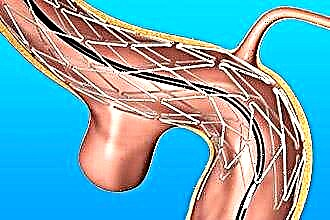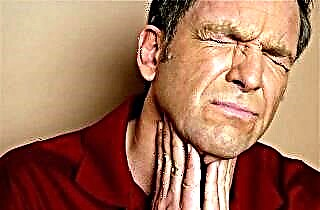The stabbing pain in the heart took almost everyone by surprise. It occurs at any age and regardless of gender. Of course, this situation instills fear in everyone, without exception. And not in vain, because there are many reasons for this condition - from banal osteochondrosis to hypertensive crisis. That is why it is important to know what tingling is associated with and how to help yourself with the next attack of pain.
Common causes of stabbing pain
During my medical practice, I have met hundreds of patients with complaints of tingling in the heart, and they, of course, always cause vigilance. But, to the general happiness, dangerous cardiovascular pathologies are manifested by pains of a different nature - burning, baking, pressing, bursting. Among such life-threatening diseases, I can single out myocardial infarction, unstable angina pectoris, dissecting aortic aneurysm, and some others. Nevertheless, all the stabbing sensations in the projection of the heart can be divided into two large groups.
Cardiac
Stabbing cardialgias, coming directly from the heart, are not so common, but they can pose a significant life threat:
- inflammatory processes - dry pericarditis, myocarditis;
- some rhythm disturbances - extrasystole;
- mitral valve prolapse - sagging of its cusps during the period of contraction in the left atrial cavity;
- hypertensive crisis and its complications.
I also want to note that the intensity of pain can increase with a deep breath, violent coughing or sneezing.
Extracardiac
Due to the densely branched system of nerve endings, pain sensations to the region of the heart can radiate from the spine and the digestive tract. They can also occur with mental disorders and during bouts of dry, strong, hacking cough with lung diseases.
In my medical practice, stabbing pains in the left side of the chest occurred in the following pathologies:
- hernia of the thoracic spine - saccular protrusions that occur when the vertebral disc ruptures;
- intercostal neuralgia - inflammation of the nerve endings running between the ribs;
- sciatica - an inflammatory process that affects the nerve roots;
- neurosis and neurotic states - a group of diseases associated with disorders in the psycho-emotional sphere, more often diagnosed in a young group of the population;
- vegetative-vascular dystonia - dysfunction of the autonomic nervous system, in which a slight tingling sensation may occur in the region of the heart;
- osteochondrosis of the thoracic spine - a complex of degenerative-dystrophic changes in the intervertebral discs (read how to distinguish the heart pain of this pathology here);
- herpes zoster is a viral disease characterized by the appearance of a herpetic rash.
The main features of non-cardiac pain are their intensification when turning the torso, raising the arms and the lack of effect from taking "Nitroglycerin" or "Molsidomin".
How to identify the source
In each case, the most important thing is to detect the focus from which the pain sensations emanate. I do not recommend examining this problem on your own - it is better to seek advice from a competent specialist. Pain in the left side of the chest almost always requires additional diagnostic procedures.
5 signs of heart disease
The presence of a symptom from the list below should make you want to see a doctor. This is especially true for people who have a history of increased body weight, high blood cholesterol levels, arterial hypertension and diabetes mellitus. The clinical manifestations of heart disease are ranked from most serious to least dangerous:
- Discomfort or burning, burning, bursting pain in the sternum. They are able to give to the left half of the body, the lower jaw, less often to the right shoulder or forearm. Pain syndrome is often provoked by physical exertion or severe psycho-emotional shock.
- Episodes of loss of consciousness, occurring on their own or when lifting weights. These manifestations may be associated with Morgagnier-Adams-Stokes syndrome - fainting caused by a sharp decrease in cardiac output.
- Shortness of breath is a feeling of shortness of breath. Its cause must always be differentiated from diseases of the bronchopulmonary system.
- Swelling of the legs, worse towards the end of the day. They start from the feet and go to the lower legs, thighs, perineal region and are able to spread to the whole body.
- Fast fatiguability. She should especially alert young people. If there is severe weakness when performing the simplest actions (for example, climbing 1 - 2 floors), urgently check your heart.
Surveys
When patients come to me with complaints of stitching pains in the region of the heart, I first of all conduct a detailed survey. It is important to clarify the psycho-emotional status of the patient, the presence of "overlapping" diseases. The next step is to measure blood pressure. Next, I carry out palpation (probing), in which special attention should be paid to the intercostal spaces. Of the general clinical research methods, auscultation can also help, as a result of which various rhythm disturbances are detected. Stitching, cutting sensations in the region of the heart can occur with extrasystoles - untimely contractions.
To identify cardiac pathology, I can prescribe the following laboratory tests and instrumental methods:
- lipid profile;
- electrocardiogram;
- echocardiography;
- stress tests - bicycle ergometry, treadmill;
- X-ray, CT or MRI of the thoracic spine;
- ultrasound examination of internal organs.
How to relieve pain and what to do next
If your heart aches at home, then first you need to stop worrying. Remember that cardialgias of this nature are rarely associated with cardiovascular pathology. If the medicine cabinet contains sedatives (valerian tablets, motherwort, Tricardin drops, etc.), then their use is permissible.
The next step will be a visit to the doctor - ignoring heart pain is unacceptable. Only a specialist will be able to carry out a differential diagnosis of pain syndrome that occurs in the chest.
With osteochondrosis or hernia of the thoracic spine, the use of non-steroidal anti-inflammatory drugs is allowed as first aid:
- "Nimesulide";
- Diclofenac;
- Ibuprofen;
- Meloxicam;
Expert advice
- Get a blood pressure monitor and check the readings if you experience stabbing pain. You can read about which pills for hypertension are the most effective here.
- To clarify the disease that provoked the pain syndrome, you can consult physicians, general practitioners, cardiologists and neurologists.
- Examine the thoracic spine for osteochondrosis. In the overwhelming majority of cases, it is he who acts as the source of pain.
Clinical case
A 24-year-old man came to me with complaints of stabbing pains in the region of the heart, aggravated by coughing and sharp turns of the body. The deterioration of the state was observed for the last 3 days. Objectively: auscultatory cardiac activity is rhythmic, blood pressure is 110/70 mm Hg. Art., heart rate 72, t = 36.6 ° C. On palpation in zone IV of the intercostal space, a sharp increase in pain was noted.When the torso was turned to the sick side, the intensity of the pain syndrome also increased.Was diagnosed with "Intercostal neuralgia". The patient received a course of non-steroidal anti-inflammatory drugs (Diclofenac) for 7 days. After that, he noted a significant improvement in general condition and the disappearance of stabbing pain in the heart.



